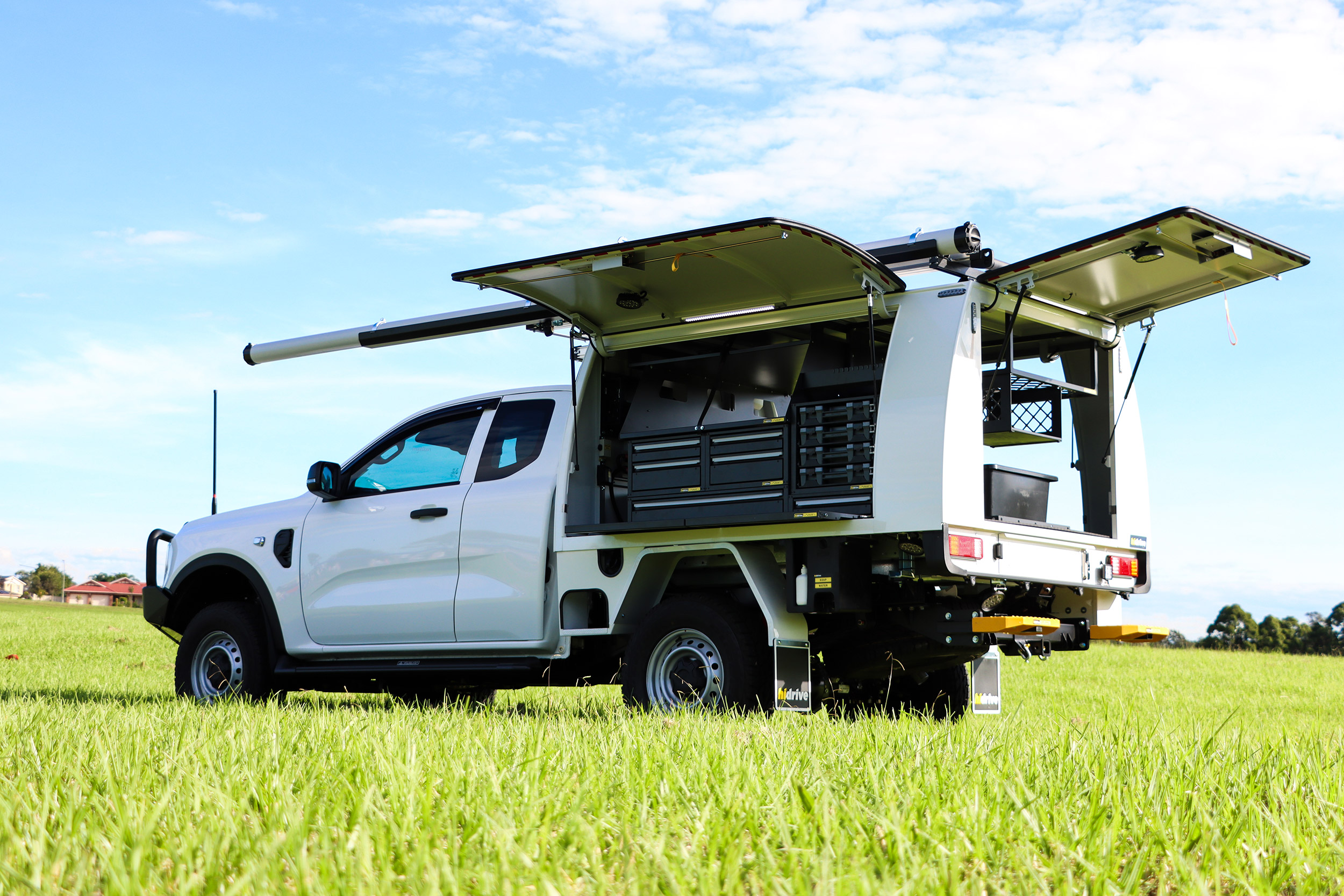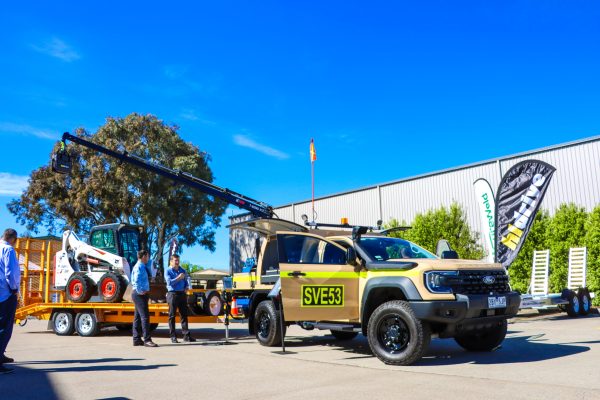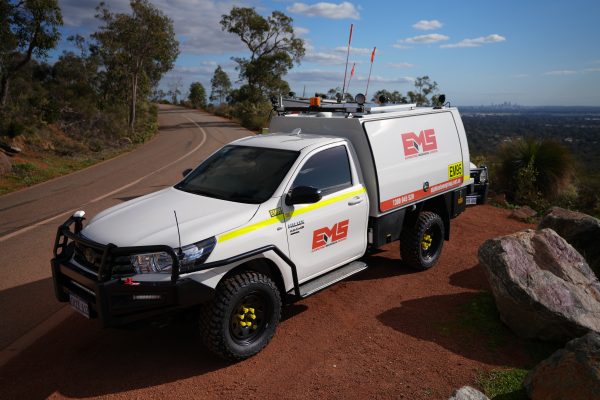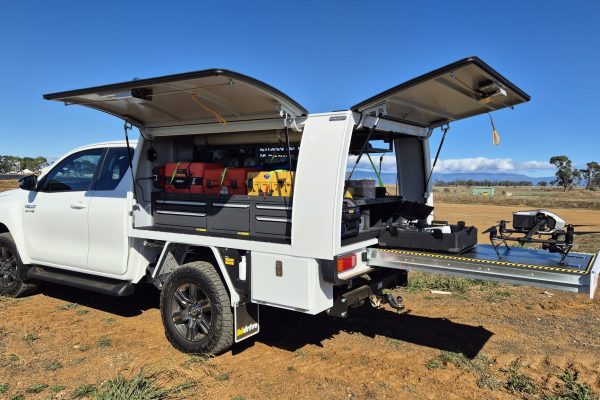For fleet managers and tradespeople across Australia, every kilogram on a vehicle matters. Exceeding gross vehicle mass (GVM) limits can trigger compliance issues, increase wear on brakes and suspension, and even put insurance coverage at risk. That’s why the weight of your service body is more than just a design detail – it’s a business-critical factor that impacts safety, efficiency, and long-term operating costs.
Hidrive has spent more than 30 years engineering aluminium service bodies that are among the lightest on the market. By combining strength with reduced weight, these builds give fleets more usable payload capacity without compromising durability or functionality. Through co-bonded aluminium construction, innovative engineering, and efficient design processes, Hidrive ensures every service body is purpose-built to deliver maximum performance.
The result is increased payload, improved fuel efficiency, enhanced safety, and a longer vehicle lifespan. Lightweight service bodies also give fleets an advantage in sustainability, with lower emissions helping meet environmental goals. And as electric vehicles become more common, lighter builds will be even more important to offset the heavy battery weight. This article explores why a lighter, stronger service body is a smarter choice for fleets now and into the future.
Key Takeaways
- Service body weight directly impacts payload, compliance, and safety.
- Hidrive’s aluminium construction delivers strength without excess weight.
- Innovative engineering reduces unnecessary bulk while maintaining durability.
- Lightweight designs improve fuel efficiency, reduce wear and tear, and protect insurance coverage.
- Lighter builds prepare fleets for future EV adoption by maximising payload flexibility.
Summary Table
| Innovation / Benefit | What It Means | Fleet Impact |
| Co-bonded aluminium construction | Strong, corrosion-resistant materials without excess weight | More payload capacity, longer service life |
| Innovative engineering | Reinforced extrusions and smart mounting systems | Strength-to-weight optimisation, reduced stress on chassis |
| Efficient design | Modular layouts and integrated systems | Lighter bodies, consistent durability, compliance confidence |
| Lightweight accessories | Doors, drawers, shelves, and roof systems designed in-house | Seamless integration, lower total weight, improved efficiency |
| Fleet-wide benefits | Less wear, safer handling, lower emissions | Reduced maintenance, insurance protection, and sustainability gains |
The Importance of Weight in Fleet Vehicles
When it comes to running a compliant and efficient fleet, weight is one of the most important factors to manage. Every vehicle has a Gross Vehicle Mass (GVM) limit — the maximum allowable weight including the vehicle itself, the service body, tools, accessories, and payload. Exceeding that limit can result in fines, compromised safety, and even insurance claims being denied. For government and corporate fleets in particular, staying within compliance is not optional; it is a core requirement.
A lighter service body gives fleet managers more flexibility. Instead of using up valuable GVM capacity on the body itself, a lightweight aluminium build frees up space for equipment, tools, and materials that are critical to the job. The difference may be hundreds of kilograms across a fleet, which directly translates into more usable payload and fewer restrictions on day-to-day operations.
The safety implications are just as important. Overloaded vehicles put greater strain on suspension, brakes, and tyres, increasing the risk of accidents and accelerating wear. A lighter setup improves handling, braking, and stability, giving drivers more confidence on the road.
At Hidrive, we recognise that managing vehicle weight is about more than compliance — it’s about protecting your investment, safeguarding drivers, and ensuring long-term efficiency across the fleet.
Co-Bonded Aluminium Construction
Not all service bodies are built the same. The materials and methods used in construction determine how well a body performs under pressure and how much it weighs on the vehicle. Traditional steel builds, while strong, add significant weight and reduce available payload. Aluminium offers the perfect balance — combining durability, strength, and corrosion resistance with far less weight.
Hidrive has refined its co-bonded aluminium construction process over decades. By using high-strength aluminium alloys and bonding techniques, we deliver service bodies that are not only lightweight but also built to last in Australia’s toughest environments. This approach allows everybody to withstand demanding conditions such as construction sites, unsealed roads, and heavy daily use, while still maintaining compliance with GVM regulations.
The modular nature of Hidrive’s co-bonded design also makes it more efficient. Integrated mounting systems are engineered to distribute weight evenly across the chassis, minimising stress points and ensuring the service body remains secure and stable throughout its life. The result is a build that uses materials effectively, avoids unnecessary bulk, and maximises payload capacity.
By choosing aluminium over steel, fleets gain more flexibility, lower maintenance requirements, and a significant reduction in total vehicle weight. It’s this engineering detail that makes Hidrive’s service bodies among the lightest and strongest on the market today.
Innovative Engineering and Efficient Design
Reducing weight without sacrificing strength requires more than just material choice — it demands innovative engineering and a commitment to efficient design. Every Hidrive service body is built with structural reinforcements and aluminium extrusions that provide strength where it’s needed most, without unnecessary bulk. This optimisation ensures the best strength-to-weight ratio, giving fleets lighter builds that still perform under heavy use.
Mounting systems play a major role in this efficiency. Hidrive designs its integrated mounting systems to distribute weight evenly across the chassis, preventing stress points and extending the life of both the vehicle and the body. By engineering these systems in-house, we can ensure each fitout delivers durability and compliance without adding excess mass.
Efficiency also comes from a modular approach to design. Rather than creating a one-size-fits-all product, Hidrive builds service bodies with interchangeable panels and components. This process reduces wasted materials, ensures consistent quality, and allows customers to configure their setup to suit specific requirements.
The outcome is a service body that is both innovative and practical. By combining advanced engineering with efficient design processes, Hidrive creates lighter bodies that improve vehicle handling, maximise payload, and keep fleets compliant — all while maintaining the durability and functionality expected in demanding industries.
Lightweight Accessories and Integration
A service body is only as effective as the accessories that support it. Doors, drawers, shelving, roof racks, and underbody storage all add weight to a vehicle, which is why accessory design is just as important as the body itself. At Hidrive, we manufacture many of these components in-house, giving us full control over materials, integration, and quality. The result is accessories that are durable, functional, and as light as possible.
By designing accessories to integrate seamlessly with the service body, Hidrive eliminates the need for unnecessary add-ons or retrofits that can increase weight and compromise performance. Every drawer, toolbox, and shelf is engineered with weight-saving in mind, while still delivering the secure storage and organisation required for demanding jobs. Roof systems and underbody storage are built to the same high standards, ensuring strength without adding unnecessary bulk.
This integrated approach also improves efficiency during fit-outs. Because Hidrive accessories are purpose-built for our service bodies, installation is streamlined, reducing delays in delivery and ensuring each vehicle is ready for work sooner. For fleets, this means less downtime and more consistent fitouts across the range.
Lightweight accessories are a key part of Hidrive’s commitment to future-proofed design — maximising payload capacity, enhancing functionality, and ensuring every vehicle is fit for purpose without carrying excess weight.
Key Benefits for Your Fleet
A lighter, stronger service body delivers measurable benefits that extend well beyond the vehicle itself. For fleet managers, every advantage translates into reduced costs, safer operations, and improved long-term performance.
One of the clearest benefits is increased payload capacity. By reducing tare weight, Hidrive service bodies allow vehicles to carry more tools, equipment, and materials without exceeding Gross Vehicle Mass (GVM) limits. This ensures fleets remain compliant with regulations, avoiding overloading fines and the potential loss of insurance coverage.
Lightweight builds also reduce wear and tear. Less strain on suspension, brakes, and tyres means lower maintenance costs and longer vehicle life. The result is fewer repairs, reduced downtime, and greater efficiency across the fleet.
Safety is another critical factor. Lighter vehicles handle better, with improved braking, acceleration, and stability. For drivers working in demanding environments, this translates to a safer, more reliable vehicle.
The operational savings are equally significant. Lower fuel consumption reduces running costs and helps businesses meet sustainability targets by cutting emissions. Fleets not only save money but also strengthen their environmental credentials.
Hidrive’s lightweight aluminium service bodies give fleets across Australia the perfect balance of strength, compliance, and durability. For managers responsible for multiple vehicles, these advantages compound — creating long-term value and a stronger return on investment.
Future-Ready – Lightweight Service Bodies for EVs
Electric vehicles (EVs) are steadily making their way into Australian fleets as businesses look to reduce emissions and meet sustainability targets. While EVs offer clear environmental benefits, they also present unique challenges for fitouts. The most significant of these is payload capacity. Because EV batteries are heavy, the available Gross Vehicle Mass (GVM) for tools, equipment, and service bodies is often lower than that of a conventional ute or truck.
This is where a lightweight service body becomes essential. By reducing tare weight, aluminium builds give fleet managers more flexibility to carry what they need without exceeding compliance limits. Even a few hundred kilograms saved on the body can make a major difference to what the vehicle can legally and safely transport.
Hidrive is actively developing solutions to support EV fitouts, building on decades of experience in lightweight aluminium design. Our co-bonded construction, modular layouts, and weight-saving accessories are all part of making service bodies more compatible with emerging vehicle platforms. For businesses planning their fleet transitions, a lighter build helps maintain productivity while still achieving environmental goals.
Future-proofing isn’t just about today’s compliance — it’s about preparing fleets for tomorrow. With lightweight service bodies, EV adoption becomes more practical, efficient, and scalable.
Final Thoughts
The weight of a service body is more than a design choice — it’s a critical factor that influences compliance, safety, efficiency, and long-term fleet performance. Every kilogram saved translates into more payload capacity, reduced wear and tear, and improved fuel efficiency. For fleet managers, these advantages compound across multiple vehicles, delivering significant operational savings and stronger sustainability outcomes.
Hidrive has built its reputation on designing and manufacturing lightweight aluminium service bodies that are strong, durable, and purpose-built for demanding industries. From co-bonded construction and modular engineering to weight-saving accessories and EV-ready designs, every detail is focused on maximising value without compromising performance.
For businesses looking to protect their investment and prepare for the future, choosing a lighter, stronger service body is not just smart — it’s essential.
FAQs Answered
- Why does service body weight matter for fleet vehicles in Australia?
Service body weight directly affects Gross Vehicle Mass (GVM). If a vehicle exceeds its limit, fleets risk fines, reduced safety, and even denied insurance claims. Hidrive’s lightweight aluminium bodies give fleets more usable payload capacity while keeping vehicles compliant. - How does aluminium compare to steel in service body design in Australia?
Aluminium is far lighter than steel while still offering excellent strength and corrosion resistance. At Hidrive, we use co-bonded aluminium alloys engineered for durability in tough Australian conditions, without adding unnecessary weight. - What are the safety benefits of a lighter service body in Australia?
A lighter vehicle handles better, with improved braking, acceleration, and stability. Hidrive’s weight-saving innovations reduce strain on suspension and tyres, creating safer driving conditions for crews. - Can a lighter service body reduce operating costs in Australia?
Yes. Lower weight reduces wear on key components, extends vehicle life, and improves fuel efficiency. Hidrive customers also benefit from reduced downtime and lower maintenance costs across the fleet. - How do lightweight service bodies support electric vehicles in Australia?
Because EV batteries are heavy, payload capacity is often reduced. Hidrive’s lightweight aluminium builds help fleets reclaim that lost payload, making EV adoption more practical while maintaining compliance and productivity.



